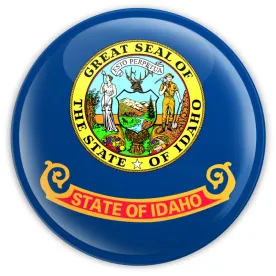Beginning June 13, Idaho became one of the first states to allow all businesses throughout the State to reopen. With this expansion in reopening, Idaho, and many other states throughout the nation, have seen statewide and regional spikes in COVID-19 case counts. Although the Stay Healthy Order moved the State into Stage 4, Governor Little said Idaho, “almost didn’t make it” to this final phase of reopening. The urgency of Little’s statement became apparent when the Central District Health’s (CDH) Director, along with the Board of Health, ordered Ada County (home to Idaho’s capital – Boise – and Idaho’s largest by population) to move back to Stage 3 of Idaho’s original reopening process, as of June 24. The order requires all bars and nightclubs in Ada County to remain closed and prohibits large venue gatherings. The decision to implement this order in Ada County came after a week of “rapidly increasing case counts and exposures within public social settings.”
While the CDH imposed new restrictions in Ada County with Governor Little’s support, Governor Little has also taken steps to help re-open Idaho businesses on a statewide basis. On June 17, Little signed Executive Order No. 2020-12 creating the Idaho Return-to-Work bonus program. This program, intended to provide economic support to aid in Idaho’s recovery from COVID-19, will use up to $100 million from the Coronavirus Relief Fund to provide bonuses of up to $1,500 to Idaho workers who return to work on or before July 1, 2020. The Order sets forth the criteria for eligibility, which includes (i) the worker has filed for unemployment benefits during the coronavirus pandemic, and (ii) the worker makes $75,000 or less annually. This push for Idaho residents to return to work seems somewhat at oddswith CDH’s push to reduce public interaction in Ada County to slow the spread of the virus.
On one end up the spectrum, we see counties reverting to earlier phases in reopening in order to combat rising infection rates. On the other end of the spectrum, we see the Governor encouraging individuals to return to work through the Return-to-Work bonus program. This adds to the confusion created by the “infodemic” we’ve previously discussed, leaving many Idaho residents asking – what is the “safe” thing to do?
Governor Little addressed some of these concerns during a recent press conference. Little emphasized that although Ada County has been moved back to Stage 3, statewide Idaho will remain in Stage 4. The Governor noted that nine counties within the state have not confirmed any cases and, although issues exist in areas like Ada County, he argued it would be unfair to put “big restrictions” on areas that are unaffected. There were expressed concerns that people living in more restrictive counties will go to places with less restrictions. Governor Little responded, “we have to draw the line somewhere.” When asked how the State would address the inconsistencies in the way health districts are responding to the increase in cases, Little stressed that counties differ in their capacity to deal with increased cases (e.g., counties’ health care capacity) and therefore the response to increased case counts will likewise differ.
Although cases have increased in some areas and individuals are being encouraged to return to work through the bonus program, Governor Little will not implement a statewide mandatory mask order, again reasoning that State residents will be unequally and unfairly disadvantaged by such an “across the board” type of order. However, testing in Idaho will “continue to ramp up.” The Governor will address the next steps in Idaho’s reopening in two weeks.




 />i
/>i

